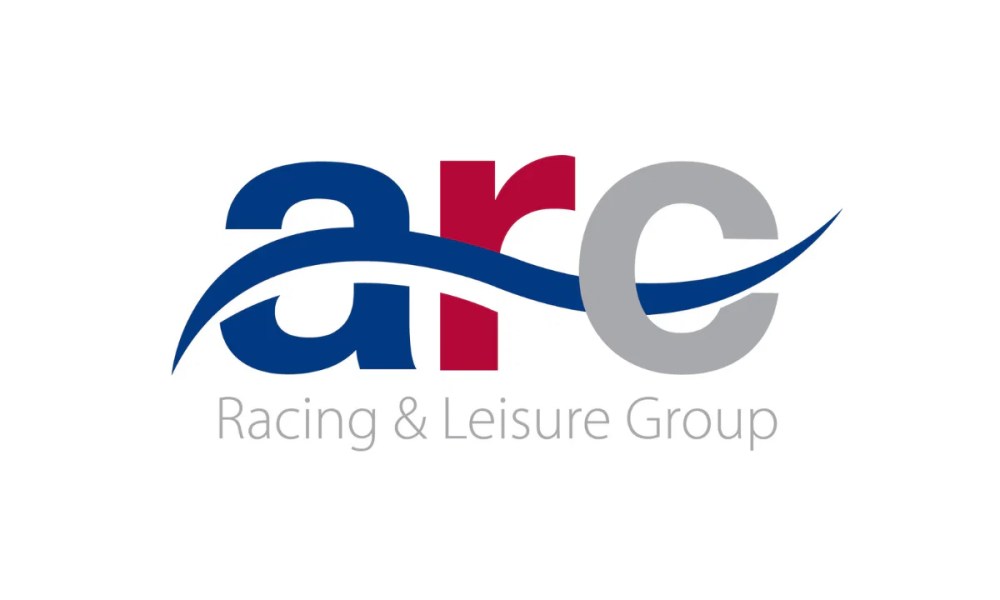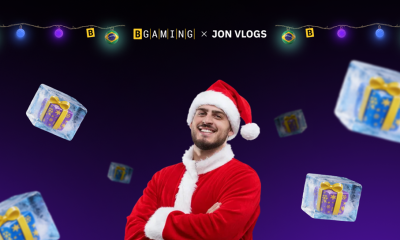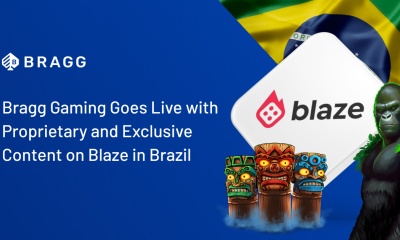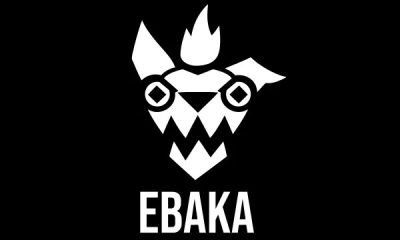Gaming
Exclusive Q&A w/ Antoine Jullemier, VP of Gaming at Bidstack
Tell us about your career to date and how you came to join Bidstack? (highlights and stories)
I’ve been immersed in the video games industry, digital environment and ad tech for the last 7 years, and specialise in advertising and monetisation. In 2016, I left my dear France to join the London branch of the French ad-exchange Mozoo and develop the Surikate product in Europe, which was the direct performance arm of the business (UA) for leading games and lifestyle apps. Following a period of significant growth, Mozoo acquired AdinCube in 2017, a leading ad mediation platform for game app developers. Here I was given the opportunity to join the new team, where I utilised my expertise to secure publisher partnerships across the EMEA region. A year later, in 2018, following a rapid period of expansion, AdinCube was acquired by Ogury, where I successfully built the gaming publisher portfolio from the ground up. Here I was able to onboard game studios such as Miniclip, Kwalee, Outfit7, Crazy Lab Games, Good Job Games and many more. In 2021 I was given the opportunity to join Bidstack to scale up the publisher portfolio across mobile, PC, and console and I am now responsible for the supply side of the business in Europe and in various other markets globally.
What does your role as ‘VP of Gaming’ at Bidstack entail?
Primarily it is focused on managing and working with a young and entrepreneurial team who are passionate about gaming and helping game developers and publishers to unlock a new, incremental revenue stream that protects the gaming experience for the end user.
Reporting to our US-based SVP Gaming, my role is essentially to lead business development for Europe with game developers and publishers across the UK, EMEA and other international territories.
Our mission is to educate studios on the benefits of integrating Bidstack’s monetisation technologies, regardless of platform and structuring deals with AAA publishers, leading game studios, and AAA titles.
What drew you to the games industry?
My path into gaming was carved out quite naturally. If I take a step back, I’ve always been passionate about gaming and have been a player myself for as long as I can remember. I can still see myself playing the SEGA Mega Drive with my brothers and spending hours on my Gameboy or Nintendo DS before evolving with each generation of new consoles like the PS1, PS2, the Xbox 360 etc.
When I started my career, I began in digital and advertising on mobile, first on the UA side of things at Surikate from Mozoo and then on the in-game monetisation side through various ad mediation platforms and ad networks; this gave me the opportunity to engage with game studios for the very first time.
The creativity, genuine talent, and passion surrounding these individuals really made an impression on me, and I found it amazing to discover more about programmatic exchanges and all the rules, processes and technical considerations that were happening in the background of the games themselves in order to drive revenue for those studios.
Today, I’m very grateful to work within such a fast-growing and ever-evolving industry. The gaming market is a multi-billion dollar industry that engages around 3 billion gamers yearly, and that number only looks set to grow.
The industry is no longer a niche interest; video games are now mainstream and very much a part of everyday life for billions. Advertisers have started to pay more attention to that in addition to their traditional media mix like TV, Print or Social Media, which makes it the best place to be, in my opinion.
What’s super exciting in our industry is that you can never get bored. From new user privacy and data protection laws, new monetisation formats and gaming platforms to record-breaking mergers and acquisitions, there is always something new happening.
Are you a gamer in your downtime/what do you play?
I’m still a gamer myself, mainly on console. I’m a big fan of my PS5, and if you don’t find me hitting some COD Modern Warfare 2 these days, I will probably be trying to finish Elden Ring!
Bidstack is an in-game advertising and video game monetisation platform. What does this mean in practice?
Bidstack’s mission is to empower game developers to dynamically control and monetise space within and around their gaming environments.
Our programmatic platform pioneered how brands deliver ads into natural spaces within video games – with these brand experiences varying from trackside banners and cityscape billboards to pitchside LED boards, skins and other contextually relevant surfaces within a gaming environment.
The platform was designed with performance in mind, and all of our products ensure stability and security for our partners across their in-game, rewarded video, and in-menu inventory. Our proprietary technology also ensures that the realism of a game is maintained by rendering effects on top of creatives to make them a seamless part of the experience.
Bidstack gives publishers total control over what appears in their games via our AdConsole – here; they are able to approve or reject ads in real-time before they appear in their gaming environments. We further bolstered our ad quality capabilities with the acquisition of Pubguard (a malvertising and ad quality platform) in 2019, with their suite of tools ensuring that we deliver a premium advertising experience for our partners and maintain strict category exclusions.
Bidstack delivered the world’s first programmatic in-game campaign in 2018. Since then, we have grown from a team of 4 staff to more than 80 across 5 international locations and became a public company listed on the London Stock Exchange. We also have a unique sales footprint thanks to our strategic partners and secured a strong portfolio of +150 games across Mobile, PC and Console.
However, Advertising represents just one use case for our technology, with many of our gaming partners utilising the platform as a content management tool to reduce dev cycles and manage brand licensing relationships across their titles.
What are the benefits of in-game advertising for developers and players?
The benefits are numerous. Our technology unlocks a new, sustainable route to revenue for publishers, which is non-intrusive and can work alongside existing monetisation strategies.
Developers can now authentically recreate real-world environments in which audiences have come to expect the presence of realistic advertising, including billboards, banners or product placements across in-game, in-menu and rewarded video formats.
We are the leading solution when it comes to helping developers across all platforms (Mobile, PC, Console, Metaverse) navigate the waves of the medium successfully, opening this new incremental revenue and reducing ad pressure with a better user experience.
In a world where the vast majority of gaming ads are performance-based, the brand advertising we offer reduces churn rates and increases user retention for developers, making the game a more premium and safe environment.
This leads me to the player benefits. Unlike other digital ad types, in-game advertising also sits better with consumers. Seven in 10 UK gamers feel positive or neutral towards organically embedded in-game advertising. Among console gamers, 22% are more likely to buy brands advertised in games.
While some existing and well-established ad formats can be intrusive (full-screen unskippable ads etc.), when done well, in-game advertising, fully native and blended in the environment in a non-clickable way, can really increase the immersion and make the game a more realistic experience. I would personally love to stumble across a billboard promoting the latest smartphone from a real brand when walking around Night City in CyberPunk. This would look awesome and make me feel this is kind of real!
What’s the best in-game ad you’ve seen lately?
Probably our campaign with Paco Rabanne and Starcom into Rezzil, which won the Best Regional Campaign – North America at the TheWires 2022 ceremony recently. It delivered impressive results through the use of contextual and virtual reality, leading the way for future opportunities in that space.
What are some of in-game’s challenges, and how can they be overcome?
One key challenge is the fact that every player is different, especially within the free-to-play arena, and will react to a game’s experience in their own way, so it’s important to explore different ways to monetise your titles.
Harmony between in-app purchases and in-game advertising is key. Both solutions are complementary and need to work in the right balance. As I was saying earlier, there are so many innovative formats in the market now that game developers have a real opportunity to support the development of their games whilst enhancing the experience for players.
Another challenge is keeping up with the new innovations that are driving value in a constantly evolving market. To stay ahead of the game, I think you have to build trust with your players and show them respect by leveraging quality branding ads in formats that are designed to enhance their playing experience rather than polluting the game experience with overly intrusive, non-relevant advertising that will damage the whole experience.
So with players now less accustomed to paying for accessing their favourite games and increasingly frustrated with intrusive monetisation methods, many developers are now turning to in-game advertising as an option that works for game creators and players alike.
Looking forward, what can we expect to see from Bidstack – and you – in 2023?
Bidstack is in a stage of exciting growth. We recently announced some huge hires in the US and 2023 shows no sign of slowing down. Next year, we anticipate expanding our range of products and ad formats, bringing on board more games studios and brands, and further growing our talented team. For me personally, a part of my job that I love is attending amazing technology conferences and gaming events. With the world now fully opened up again, 2023 presents amazing opportunities for us to get our technology in front of the world’s best publishers and brands.
Powered by WPeMatico
Arena Racing Company
Arena Racing Company awarded United Arab Emirates Gaming-Related Vendor License

Arena Racing Company (ARC) has been granted a Gaming-Related Vendor license from the United Arab Emirates’ General Commercial Gaming Authority (GCGRA), an independent entity of the UAE Federal Government with exclusive jurisdiction to regulate, license, and supervise all commercial gaming activities.
The license, operational with immediate effect, affords ARC the opportunity to provide its products and services to licensed operators in the region. Notably, the Racing1 Markets service, an all-in-one horse and greyhound racing solution delivered in conjunction with Racing1 alliance media rights partners at 1/ST CONTENT, Racecourse Media Group (RMG), and Tabcorp, alongside technical partner Pythia Sports. ARC has been added to the list of licensed vendors as per the GCGRA website.
Jack Whitaker, Commercial Manager at ARC, said: “Obtaining this license is a great achievement for ARC and its Racing1 partners. The emerging regulated UAE market is incredibly exciting, and we look forward to showcasing our innovative products and services in the region.”
The post Arena Racing Company awarded United Arab Emirates Gaming-Related Vendor License appeared first on Gaming and Gambling Industry Newsroom.
Battle of the Tribes
POLYTOPIA WORLD CHAMPIONSHIP 2025 BREAKS RECORD PARTICIPATION AS FINALS DRAW CLOSER

Reading Time: 2 minutes
Celebrated strategy game The Battle of Polytopia confirms its first ever World Championships has exceeded expectations with over 10,000 sign-ups in its qualifying rounds. While no stranger to tournaments, previously hosting smaller scale, local tournaments called ‘Polysseums’, developer Midjiwan’s first step into global esports has been met with extreme success. The inclusive esports event has a $10,000 prize pool and will conclude on 6 December 2025, 14:00-21:00.
The finals will take place in front of a live-studio audience, with expert commentary and a chance to peek behind the scenes at Midjiwan itself. First place will receive $4,000, the runner-up will take away $2,000, the third and fourth place finishers will get $1,500, and the fifth and sixth place $500.
The Polytopia World Championship 2025 is being hosted by eSports platform, Challengermode, who Midjiwan has relied on for its monthly local tournaments since 2022. Midjiwan also partnered with Black Molly Entertainment to help organise and manage the event. Black Molly Entertainment have years of experience managing eSports tournaments, with notable events including the Geoguesser World Cup and CS:GO Pinnacle Cup Championship.
Midjiwan has worked closely with its community to ensure engagement is high with each round, building a bespoke ‘Spectator Mode’ into the game so fans can watch each game live through the game itself. In the spectator mode the viewer has visibility of all players simultaneously, with stats on how many cities, technologies, kills and more available for quick access.
Christian Lovstedt, CEO of Midjiwan commented:
“Polytopia has always been about welcoming all kinds of players into the world of 4X strategy. That’s why our championship is open to everyone – not just pros with sponsors. We’ve been thrilled at the amount of interest this tournament received from our community, reaching participation numbers way beyond our expectations. We’re excited to bring the finalists to Stockholm and can’t wait to see the strategies that emerge.”
The Polytopia World Championship 2025 kicked off in September, with its ‘Battle of the Tribes’ qualifying round – weekly battles where players competed to be the best in each of the game’s 12 tribes. After an exciting six weeks, the top player from each tribe faced-off, reducing the qualifiers to six finalists. These six winners are listed down below.
|
Tribe |
Qualifying Player |
|
IMPERIUS |
ArthurL248 |
|
BARDUR |
slimmingboy |
|
OUMAJI |
Dreamlander3000 |
|
HOODRICK |
Theetat |
|
XIN-Xi |
LeLiberateur |
|
LUXIDOOR |
Meisterlampe |
Recaps of each round of the tournament prior to the finals can be watched on the official Battle of Polytopia YouTube channel.
-
Part 1: Polytopia World Championship 1st Qualifiers Wrap-Up – BARDUR, IMPERIUS, KICKOO, ZEBASI
-
Part 2: Qualifiers Wrap-Up – Oumaji Hoodrick Yadakk & Quetzali – World Champoinship 2025
-
Part 3: Final Qualifiers Wrap-Up – Xin-Xi, Luxidoor, Ai-Mo & Vengir – World Championship 2025
-
Face-off stream: https://youtube.com/live/GnU6mWPoJiY?feature=share
To watch the finals live on December 6,visit here: https://polytopia.io/stream/
To stay up to date on the Polytopia World Championship 2025, or purchase one of the limited tickets for the live event, visit the official website or join the Official Polytopia Discord.
The post POLYTOPIA WORLD CHAMPIONSHIP 2025 BREAKS RECORD PARTICIPATION AS FINALS DRAW CLOSER appeared first on European Gaming Industry News.
Betiator
Delasport Unveils a Crash Game for Sports Betting

Reading Time: 2 minutes
Leading iGaming supplier Delasport teases a one-of-a-kind sports betting crash game called Betiator – a new in-play experience that merges live sports with the tension and excitement of crash games.
Inspired by the groundbreaking casino genre, the company once again pushes the whole industry to a new phase in evolution by allowing sports bettors to play in the same easy and fun way as fellow casino players. Crash games are booming in the casino world, showing that players crave more emotional, fast, and visually engaging formats – and Betiator brings that same adrenaline-charged energy to the sportsbook.
It changes the scene by introducing a truly innovative way to bet on sports, keeping players at the edge of their seats during the game. Designed to excite both sports bettors and casino players, it marks a defining moment for innovation.
This product comes as a logical next step in the evolution of live betting and the company’s goal to disrupt the iGaming industry. It demonstrates Delasport’s successful commitment to unique innovation: a strategy they call “Going Beyond Content” –building on the success of products and features like SuperPot, My Sportsbook, My Combo, Double My Winnings, and many more.
“Sports bettors deserve the same level of innovation and excitement that casino players get all the time,” Delasport’s CEO Oren Cohen Shwartz says. “At Delasport we’re taking the whole game to a new playing field with Betiator. Live betting won’t feel outdated anymore as we’re bringing in the thrill of the casino to sports betting.”
While details about Betiator remain under wraps for now, Delasport promises a completely new way to experience live sports. Operators and partners eager to see it in action can schedule exclusive demos and discover more at ICE Barcelona 2026, taking place January 19–21, where Betiator will make its official debut.
The post Delasport Unveils a Crash Game for Sports Betting appeared first on European Gaming Industry News.
-

 BGaming5 days ago
BGaming5 days agoBGaming and Jon Vlogs Spread Christmas Joy with Charity Initiative
-

 Blaze5 days ago
Blaze5 days agoBragg Gaming Rolls Out Exclusive Proprietary Titles via Blaze in Brazil
-

 Andre Medeiros5 days ago
Andre Medeiros5 days agoGreentube expands Latin American footprint with Brazino777 partnership
-

 Belatra Games3 days ago
Belatra Games3 days agoFrom ‘Mummyverse’ to Crash Games: Belatra Reviews a Landmark 2025
-

 Arena Racing Company6 days ago
Arena Racing Company6 days agoArena Racing Company awarded United Arab Emirates Gaming-Related Vendor License
-

 ARC3 days ago
ARC3 days agoRacing Meets Nightlife: SBK Backs ARC’s New ‘Friday Night Live’ Series
-

 Bet Tracking5 days ago
Bet Tracking5 days agoFANDUEL AND FANDUEL SPORTS NETWORK CONTINUE BROADENING STRATEGIC PARTNERSHIP WITH LAUNCH OF BET TRACKING ACROSS SELECT NBA AND NHL GAMES
-

 BMM Testlabs3 days ago
BMM Testlabs3 days ago‘Chaos and Soul’: Ebaka Games Plots Global Expansion After Viral Launch

















